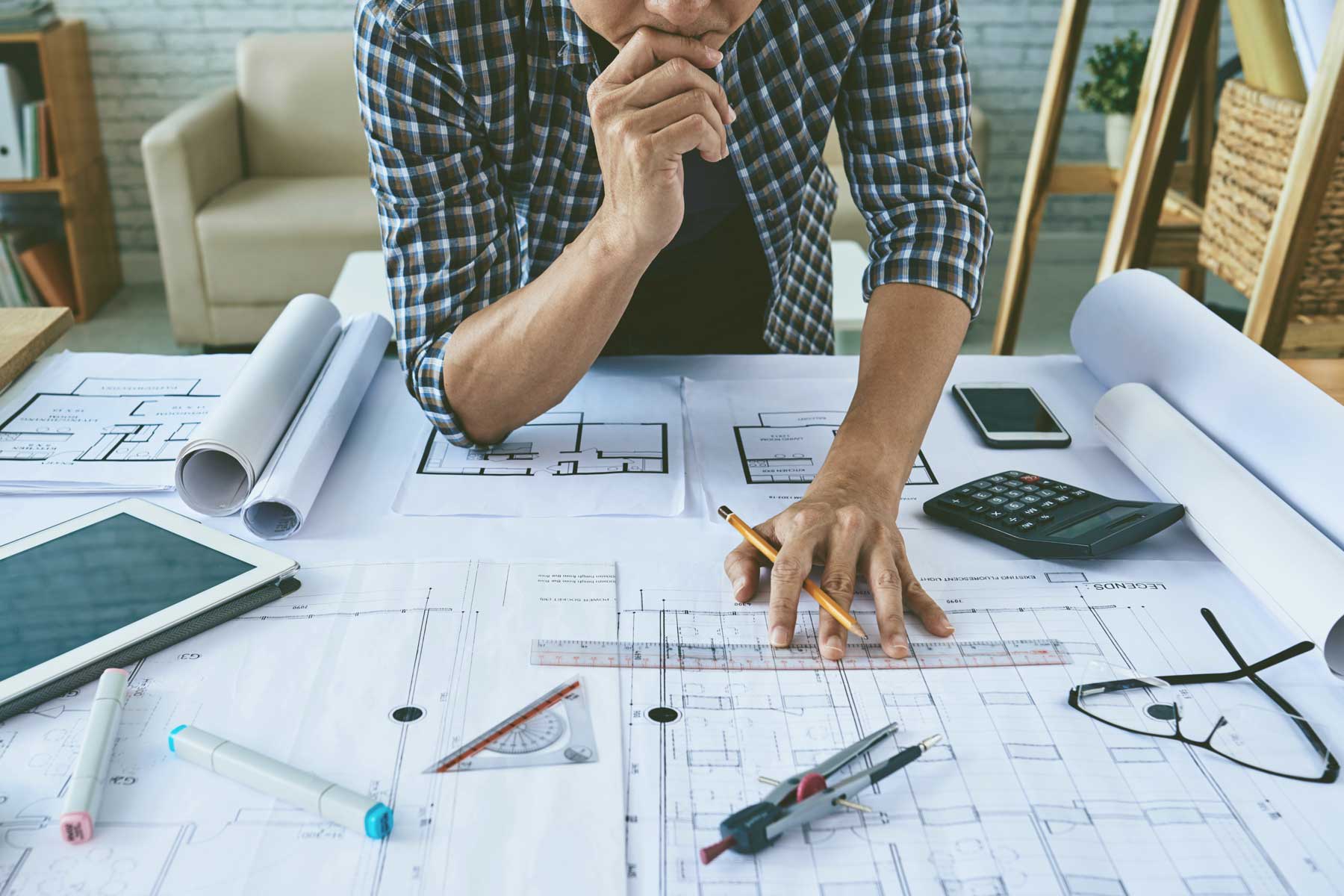Architect Collaboration Tips for Working with Consultants and Contractors
Wiki Article
Understanding the Diverse Career Paths Available for Aspiring Architect
As an aspiring Architect, you have a world of profession courses waiting for you. Whether you're attracted to traditional design or the nuances of sustainable design, there's a particular niche that straightens with your interests.Conventional Design: Creating Frameworks and buildings
Typical architecture concentrates on designing buildings and frameworks that mix functionality with aesthetic appeal. Your designs can reflect cultural heritage, showcasing local traditions while satisfying modern-day demands.You'll create abilities in preparing, model-making, and site evaluation, permitting you to imagine and communicate your concepts properly. Involving with clients, you'll need to recognize their vision and convert it right into feasible styles.
Additionally, constructing codes and sustainability practices are crucial in your job, guaranteeing your structures are risk-free and environmentally friendly. As you expand in your profession, you'll locate possibilities in domestic, business, or even repair projects, each offering distinct obstacles. Welcoming typical architecture leads the way for a meeting profession that pays tribute to the past while shaping the future.
Urban Planning: Shaping Areas and Public Spaces
As an ambitious Architect, you can play an essential function as an urban coordinator, changing exactly how communities work and connect. By employing area engagement techniques, you'll ensure that homeowners have a voice fit their environment. And also, integrating lasting design concepts will certainly aid produce rooms that not just fulfill today's demands but also safeguard the future.Duty of Urban Planners
While many could assume of designers as the single enthusiasts behind structures, city organizers play a necessary role in forming the more comprehensive landscape of neighborhoods and public spaces. By teaming up with different stakeholders, you'll assist develop parks, transport systems, and household areas that advertise social interaction and accessibility. Your expertise in spatial layout and community characteristics enables you to visualize future growth while maintaining cultural heritage.Community Interaction Methods
Efficient community involvement techniques are important for urban coordinators to ensure that the voices of homeowners are heard and valued in the planning procedure. To cultivate meaningful dialogue, you need to focus on open forums and workshops where neighborhood members can express their ideas and concerns. Usage surveys and social networks to reach a wider target market, guaranteeing diverse viewpoints are included. Teaming up with neighborhood organizations can enhance depend on and assist in much deeper links. It is essential to offer clear details concerning proposed tasks and decision-making procedures, enabling locals to really feel informed and empowered. By proactively paying attention and including feedback, you'll create spaces that reflect the community's demands, inevitably leading to even more lasting and effective metropolitan settings. Accept transparency and continuous discussion for long-term effect.Sustainable Design Principles
When creating city areas, integrating sustainable style principles is vital for producing settings that flourish both environmentally and socially. Consider incorporating environment-friendly spaces, like parks and yards, to boost biodiversity and boost air quality.Designing with water conservation in mind is also vital-- consider rainfall yards and permeable surface areas to handle stormwater. Involving community participants throughout the preparation procedure assurances that the rooms you develop fulfill their demands and encourage social communication. By embracing these principles, you'll add to dynamic, sustainable urban landscapes that profit everybody.

Landscape Design: Developing Sustainable Outdoor Settings
As you check out landscape style, you'll uncover vital style concepts that develop practical and stunning exterior rooms. Lasting techniques play a vital function in making certain these environments prosper while lessening environmental impact. And also, you'll find a variety of occupation chances that enable you to make an actual difference in exactly how individuals interact with nature.Design Concepts in Landscape
Comprehending style principles in landscape design is important for creating sustainable outside atmospheres that integrate with nature. You'll need to consider components like equilibrium, proportion, and scale to ensure your layouts feel cohesive and inviting. Integrating native plants not only enhances biodiversity but also decreases water usage, making your landscape resistant. Consider the circulation of room and how individuals interact with it; pathways and seating locations ought to welcome exploration and leisure. Additionally, take notice of seasonal modifications, designing with products that complement the environments year-round (Architect). By prioritizing sustainability and aesthetic appeals, you can create exterior areas that enhance the area and advertise wellness. Welcoming these concepts will establish a solid structure for your profession in landscape design.Lasting Practices Summary
Lasting practices in landscape style not only focus on aesthetic appeals however additionally prioritize ecological health and wellness and source conservation. You can design spaces that advertise soil health, such as using natural materials and exercising permaculture concepts. Inevitably, these techniques guarantee your styles profit both people and the environment for years to come.Occupation Opportunities Expedition
With a solid structure in lasting methods, landscape design provides a range of job courses that allow you to make a meaningful effect on the environment. You could work as a landscape designer, developing visually pleasing and useful outside areas, or specialize in environmental restoration, aiding to revive broken environments. Urban coordinators typically work together with landscape architects to develop environment-friendly rooms in city settings, enhancing city livability. If you're passionate concerning education, take into consideration ending up being a landscape architecture instructor, inspiring future generations. In addition, you could collaborate with nonprofits focused on environmental sustainability or take part in research study to innovate brand-new techniques. Each course not just forms beautiful settings however likewise cultivates a healthier earth for future generations.Lasting Layout: Concentrating On Eco-Friendly Practices
As you browse around these guys explore your job in style, accepting green practices can set you apart in an affordable field. Sustainable layout concentrates on creating structures that reduce ecological influence while enhancing resident well-being. By including sustainable products, energy-efficient systems, and lasting structure techniques, you'll add to a greener future.Begin by obtaining understanding of eco-friendly qualifications like LEED or BREEAM, which can reinforce your qualifications. Consider just how natural light, air flow, and thermal effectiveness can enhance design. Team up with designers and ecological professionals to innovate options that decrease waste and preserve resources.
Don't forget the value of community participation-- engaging local stakeholders can motivate layouts that integrate with the atmosphere. As clients increasingly prioritize sustainability, your know-how in eco-friendly techniques will not only bring in projects but additionally meet your passion for accountable architecture. Embrace this essential element of the career, and enjoy your occupation flourish.
Historic Conservation: Safeguarding and Restoring Cultural Heritage
While you commence on your building trip, take into consideration the crucial function of historic preservation in maintaining our cultural heritage. This field concentrates on the defense and reconstruction of significant structures, sites, and structures that inform the tales of our past. By participating in historic conservation, you'll help guard the building legacy that shapes community identification.As a historical conservation Architect, you'll evaluate historic value and assess the condition of frameworks. You'll function very closely with preservationists and chroniclers to ensure authentic repair methods are employed. This job course allows you to mix imagination with study, allowing you to design remedies that value original products and workmanship.
Your work not only adds to sustainability by reusing existing buildings but likewise cultivates a feeling of satisfaction within communities. Accepting this path will aid you become a guardian of history, protecting the stories and appearances that enhance our lives.
Interior Style: Enhancing Indoor Spaces
Historical conservation and indoor architecture both share a commitment to boosting the developed setting, yet they concentrate on different elements. While historical preservation emphasizes keeping a framework's cultural and historical worth, indoor style nos in on optimizing indoor rooms for functionality and looks.As an aspiring Architect, you'll find that indoor design allows you to blend imagination with technical abilities. You'll make areas that not just look excellent yet likewise promote comfort and efficiency. This field entails comprehending just how light, color, and materials engage within an area, affecting state of mind and functionality.
You'll function on numerous projects, from property homes to commercial offices, guaranteeing that each environment fulfills the demands of its owners. By focusing on individual experience, you can change interiors into functional and inspiring rooms, making a significant effect on how people connect with their environments. Welcome the possibility to improve indoor atmospheres and form the way individuals function and live.
Industrial Style: Merging Performance With Aesthetics
Industrial style plays a necessary role in creating items that flawlessly mix looks with capability, guaranteeing that what you utilize everyday is not only visually appealing but additionally functional. As an aspiring Architect, you can involve yourself in this area, concentrating on developing whatever from furniture to customer electronics. Your job involves comprehending customer needs, products, and manufacturing processes, permitting you to produce innovative options that boost everyday experiences.In industrial design, you'll usually collaborate with marketers, manufacturers, and engineers, ensuring that your designs are not only gorgeous but also practical. This profession course provides a vibrant atmosphere where creative thinking fulfills functionality, making it a fulfilling selection for engineers interested in shaping the items of tomorrow.
Regularly Asked Questions
What Educational Qualifications Do I Need to Become an Architect?
To end up being sites an architect, you'll require a specialist level in architecture, usually a Bachelor's or Master's. Furthermore, you'll need to complete a teaching fellowship and pass the Architect Registration Exam to exercise lawfully.Exist Qualification Requirements for Various Architectural Job Paths?
Yes, there're certification needs for various building courses. Architect. You'll require to pass exams, complete internships, and often pursue specialized training, depending on your chosen focus, like landscape design, urban design, or historical preservationWhat Software Application Abilities Are Necessary for Architects Today?

How Can I Gain Practical Experience While Researching Style?
You can obtain functional experience by interning at architectural companies, getting involved in style competitions, volunteering for area jobs, or working together with schoolmates on real-world tasks. These chances improve your abilities and construct visit important connections in the market.What Task Opportunities Exist Outdoors Standard Architecture Firms?
You can discover different work chances outside typical design firms, like city planning, indoor style, landscape style, building and construction administration, genuine estate growth, or perhaps roles in sustainability consulting. Each deals unique challenges and benefits.Whether you're drawn to conventional design or the nuances of sustainable design, there's a niche that straightens with your passions.When making urban areas, integrating lasting style principles is vital for producing environments that flourish both environmentally and socially.As you discover landscape style, you'll find important layout concepts that create practical and gorgeous outside spaces.Understanding style principles in landscape design is necessary for developing lasting exterior environments that balance with nature.In commercial design, you'll usually work together with marketers, designers, and producers, making sure that your styles are not only stunning yet additionally possible.
Report this wiki page